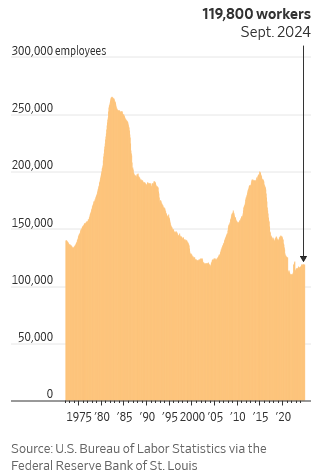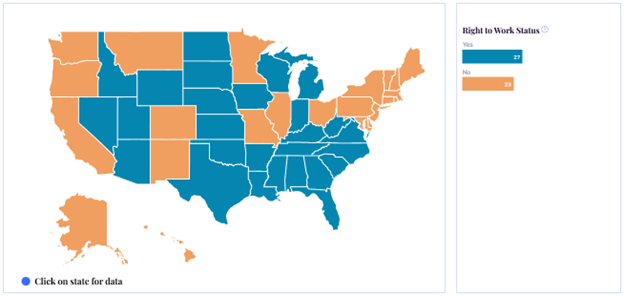
A recent study, Stacked Energyscapes, led by professors at Loyola Marymount University and Penn State University, caught my eye. The paper describes webs of complexities associated with transitions from fossil-fuel-powered economies to clean-energy economies. I burrowed into this paper as a glutton for third, fourth, and fifth-order (and beyond) downstream chain reactions and the universal picture.
The Inflation Reduction Act was deployed in part to provide a 10% tax break bonus for clean energy development in communities that have been negatively impacted by decreases or closures of fossil fuel extraction. However, developers in many locations, such as the enormous Permian Basin in West Texas and the Bakken Shale Formation in North Dakota, have taken advantage of renewable energy resources, cheap land, existing energy infrastructure, and lack of political pushback and protesting to expand fossil fuel production.
An energyscape “is not only the energy technologies, infrastructure, and systems but also the structural arrangements and institutions that make up an entire ecology of what can be called an energy sociotechnical system,” to include those items above: cheap land, cooperative landowners, accommodating proles, access to energy infrastructure, and an enormous appetite for electricity.
The gist of the paper is that fossil fuel companies and communities aren’t behaving according to plan—which is to embrace renewable supply while shutting down production of their profit centers and livelihoods. Fossil fuel extraction is funding renewable energy projects, benefiting from tax breaks and reduced grid-delivered electricity purchases.
Land
One unavoidable challenge with renewable electricity generation, among other things, is the immense land requirements to generate electricity. One megawatt of solar electricity generation requires five acres of land[1], and that one megawatt has a measly capacity factor of 0.23. As demonstrated in the Mini, Macro, and Mega look at Data Centers, the tiny footprint of data centers in Northern Virginia would require covering every square cubit of the four counties of NOVA. Since the region has the country’s most expensive real estate, it isn’t going to happen. Moreover, it won’t happen on rich farmland at a pauper’s $15,000 per acre rate. This leaves barren moonscapes and scrublands like the Permian and Bakken as prime investments for solar generation to pump more carbon out of the earth.
Furthermore, surface and subsurface property rights are bifurcated, with subsurface rights typically taking precedence. Did you know that? I did not realize most regions have bifurcated rights and that subsurface rights generally take precedence over surface rights. This allows drillers to cover the surface with renewable generation while using directional drilling technology to reach resources beneath land covered in solar panels.
One reason renewable generation thrives in rural areas is landowners, uh, own large parcels of land, making acquisition easier with fewer stakeholders involved. However, these “landmen,” as the paper calls them, have become savvy to the electricity industry, pushing up leasing costs to minimally profitable use cases that put downward pressure on renewable investment.
Another reason for collocating renewable resources with fossil extraction, known as energyscape stacking, is that it increases property value by generating multiple revenue streams. This prolongs the extraction of fossil fuels.
Infrastructure
Due to the vast land requirements, renewable resources must be built away from substations and transmission superhighways that once served coal-fired power plants. This adds to the cost of powering the larger grid but not so much locally at the end of the line where gas and oil extraction occurs.
The Energyscapes paper describes one application in California where 26 megawatts of solar and 850 MW of geothermal steam generation are used to power oil pumping rigs and extraction. Twenty-nine MW of solar generation are powering a Chevron facility next door. I imagine no tours are available except for possibly oil executives.
Labor
The paper describes “bringing back the glory days of coal in Appalachia” as a pillar of former President Donald Trump. Well, that will not happen because Appalachian coal is an expensive fuel for generating power compared to surface-mined Powder River coal from Wyoming. Appalachian coal is a much more expensive fuel for power generation than natural gas used with an efficient combined cycle natural gas plant (CC Gas shown in Figure 1.
Figure 1 shows the fuel cost of fossil-fired power generation versus the average retail price of electricity nationwide. Even an inefficient gas turbine, i.e., a peaker plant, can produce electricity at a lower fuel cost than Appalachian coal. (source: Energy Information Administration)
Figure 1 Fuel Cost and Carbon Content by Fuel Type
 On Sunday this week, The Wall Street Journal published a timely article titled Preparing for the Big Bust of America’s Oil Boom. People in the area understand the Permian surge will not last forever. Prices will plunge, or the wells will eventually run dry. For perspective, in 2024, the U.S. will produce more oil than any country ever—13.2 million barrels a day. Lea County, New Mexico, alone, produced more oil than half the 12 countries in the OPEC cartel.
On Sunday this week, The Wall Street Journal published a timely article titled Preparing for the Big Bust of America’s Oil Boom. People in the area understand the Permian surge will not last forever. Prices will plunge, or the wells will eventually run dry. For perspective, in 2024, the U.S. will produce more oil than any country ever—13.2 million barrels a day. Lea County, New Mexico, alone, produced more oil than half the 12 countries in the OPEC cartel.
Thousands of jobs are at stake. The energyscape paper reports Texas derrick workers earn approximately $27 per hour, while wind and solar jobs offer $26 and $24 per hour, respectively. I’m surprised it isn’t double that, especially for the derrick jobs. Figure 2 demonstrates how productive oil and gas rig workers have become.
Figure 2 U.S. Oil and Gas Employment
 Another reason “stacked energyscapes” thrive in certain states is they are “right-to-work” states. Workers in other states may be required to pay union dues as a condition of employment. Employers think, “Hmm, I can pay higher wages, much of which is siphoned off to withstand labor strikes that may put me out of business – or pay less and not have my company held hostage in a lose-lose scenario. Which shall I choose?”
Another reason “stacked energyscapes” thrive in certain states is they are “right-to-work” states. Workers in other states may be required to pay union dues as a condition of employment. Employers think, “Hmm, I can pay higher wages, much of which is siphoned off to withstand labor strikes that may put me out of business – or pay less and not have my company held hostage in a lose-lose scenario. Which shall I choose?”
Figure 3 Right-to-Work States
 On a levelized basis, labor costs are lower (and temporary) for renewable sources of electricity.
On a levelized basis, labor costs are lower (and temporary) for renewable sources of electricity.
Conclusion
Energyscapes will evolve as developers and investors pursue the most significant profit, considering all costs, government policies, positive or negative, and subsidies. No amount of central planning will defeat the pursuit of wealth.
[1] https://eta-publications.lbl.gov/sites/default/files/land_requirements_for_utility-scale_pv.pdf
